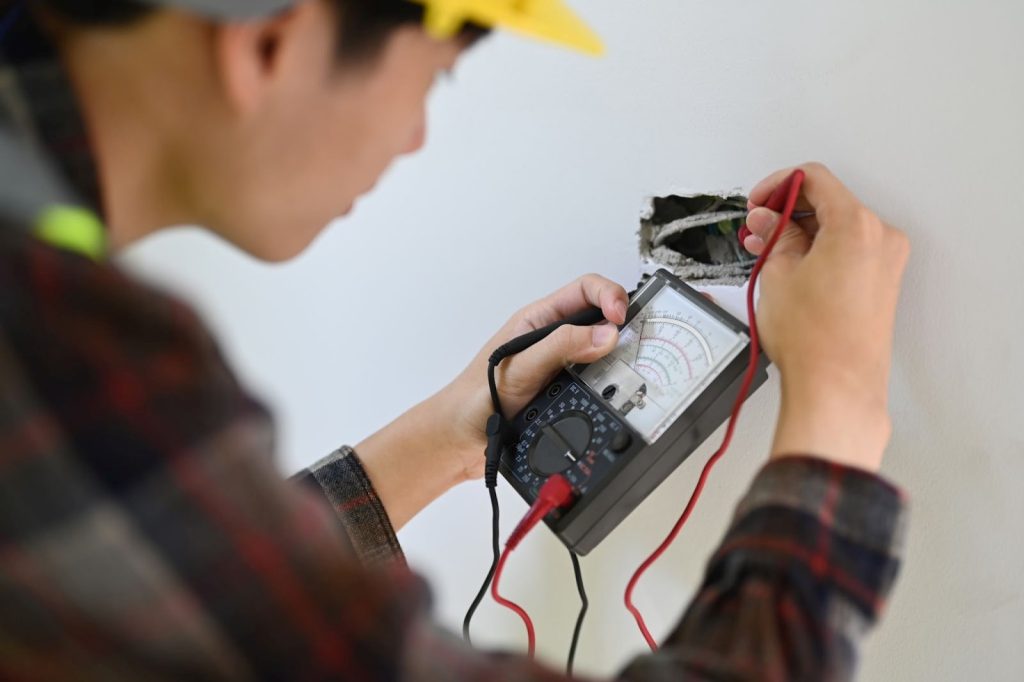Inhaling water droplets (aerosols) containing the Legionella bacteria is how most people get Legionnaires’ disease. Showering, turning on the water, or using equipment like spa pools and cooling towers can all increase the risk of exposure to this potentially lethal form of pneumonia.
This is why regular water system assessments are crucial for residential buildings, particularly when the building’s water systems have been standing still for a while. Keep reading to learn everything that you need to know about Legionella risk assessments to keep your property safe, especially if you happen to be a landlord.
What is Legionella?
Legionella is a dangerous bacteria that can be transmitted through water and cause a serious form of pneumonia known as Legionnaires’ disease. It is also associated with a less serious condition called Pontiac fever.
In a domestic building, water temperatures between 20°C and 45°C can support the growth of this bacteria. The following factors, in particular, can increase risk of exposure to the pathogen:
- Water reservoirs and systems with stagnant or recirculated water
- Whirlpool bath- or showerhead-created water droplets or aerosols
- Spray and mist scattered in the atmosphere
- Biofilm, sludge, scale, and rust that feed the bacteria
- Properties that have been vacant for a long time
In homes with combi boilers, the danger of Legionella is low since the technology keeps the water flowing. This minimises the risk of the bacteria growing and proliferating. Conversely, homes with open water tanks (often older buildings) come with an increased risk of exposure to Legionella bacteria, as the water in these tanks is often left to stand still.
What is a Legionella risk assessment?
A Legionella risk assessment (LRA) is an evaluation aimed at examining all your rental property’s water systems. It includes:
- Recognizing potential Legionella risks and the degree of risk involved
- Finding those who are at risk
- Testing of the water system for contamination
- Initiation of risk-reduction strategies
- Recording the evaluation’s results
- Reviewing the evaluation
Some landlords might be competent enough to handle this task on their own. In addition, you have the option of undertaking risk assessment training. However, if you don’t feel qualified or simply lack the time, you can hire a professional assessor to handle the situation on your behalf.
If you choose to schedule a Legionella risk inspection, you will receive a Legionella test certificate with the pertinent information given above, along with details of major discoveries and a list of recommended control actions. Ideally, the task of assessing Legionella safety risks should be assigned to a professional who is knowledgeable about the Legionella pathogen.
Schedule a Legionella risk assessment now
What’s included in the Legionella risk assessment?
An LRA’s goal is to assist you in identifying actual hazards and to outline the measures you should undertake to address any issues.
Many building managers believe a traffic-light system in an LRA is beneficial since it can help you prioritise your tasks. Under such a system, a red light might denote urgent tasks that need to be completed right now. An amber light could mean that immediate action is recommended within a prescribed timeframe. A green signal might suggest non-urgent steps that can enhance your protection from risk.
It is crucial to pick the right partner to achieve your property’s safety. You can feel secure and benefit from the depth of experience of a water hygiene business that is part of a larger organisation. In other words, it is integral to work with outside contractors who have the appropriate training and certifications to be able to carry out a comprehensive assessment of your property.
Is a Legionella risk assessment a legal requirement for landlords?
An LRA is a legal requirement for every employer, tenant, or facility manager. They all have a responsibility to comprehend and control the Legionella risk in their home or workplace and to make sure that every water system is regularly inspected for Legionella.
Legionella risk assessments are a legal duty that operators choose to delegate to outside suppliers. However, the owner or operator of the water system is ultimately responsible for compliance. It is, therefore, imperative to make sure that this crucial job is carried out by a qualified water hygiene specialist, who can demonstrate compliance with all applicable rules of conduct.
Legionella risk assessment cost
What does a landlord Legionella risk assessment involve?
An LRA will look over your recent records and past assessments to ensure that all maintenance or remedial work suggestions have been carried out. An evaluation of the risk of Legionella should involve two steps. Everyone involved in the control of Legionella bacteria should be consulted, and physical inspections and paperwork verification should be part of that process.
The first step in the LRA involves looking over your recent records and checking past assessments to make sure that all advice for maintenance or remedial work has been followed. A tour of the site will be part of the second phase of the assessment, with a focus on any locations that store water or have the potential to house bacteria.
A report with any suggestions for activities that ought to be taken to minimise or lower the Legionella risk will be subsequently written, based on these findings. The following six crucial elements should be the primary emphasis of an LRA report:
1. Vulnerability
Identifying the extent of risk surrounding those inside the structure. Is there anyone there who is especially vulnerable because of their age or their health?
2. Source
Where are cold and hot water systems fed from? Water storage, the mains, a combination of the two, or something else entirely?
3. Temperature
Recording the temperature at the water outlet. Water services must be run at levels that prevent the formation of Legionella. This amounts to 50°C or above for hot water outlets, unless there is a backup plan such as secondary disinfection in place, and below 20°C for outlets where water is held in cold water systems.
4. Infestation
Examining the cold and hot water systems will reveal whether the cold water tank is reachable, insulated, and securely covered to keep out pests and other foreign objects.
5. Type
Identifying the hot water system’s type (unvented cylinder, combi-boiler, cylinder-fed, etc.) as well as whether the distribution pipes are sufficiently insulated is important.
6. Risk
Finding other risky areas. Are mixing and shower valves installed and maintained correctly? Is there any pipework on the property that needs to be removed or changed because it has dead legs, is redundant, or is rarely used? Is there a timetable in place to routinely flush water systems if certain portions of the property are left unattended for extended periods of time?
How often do you need a Legionella risk assessment?
As per industry standards, an LRA to identify Legionella health hazards should be conducted at least every two years. To ensure that the assessment is always current, the Approved Code of Practice L8 (ACoP L8) recommends that provisions be made to evaluate the LRA “where there is reason to assume it is no longer valid.”
This is especially important since buildings housing high-risk occupants such as the elderly, may require more frequent assessments. Every time one of the following changes takes place, an LRA should be conducted:
- A shift in the building’s use where the water system in question is placed
- A modification to the actual water system
- A shift in key employees at the business
- A shift from the structure being empty to being occupied
- An update to pertinent laws
- One or more documented occurrences of Legionnaires’ disease
How long does a landlord Legionella risk assessment take?
The amount of time taken to complete an LRA depends on the property. Every hot and cold tap in the house, and outlet pipe from water tanks, must have a digital temperature reading taken.
Additionally, inspectors will need to visually check each faucet and showerhead, note unnecessary pipes and flexible hoses, and gain access to water tanks in the loft. The external tap in the property’s garden will also have to be checked for limescale, and the outdoor hoses will need to be examined.
A one-bedroom apartment with a combi boiler would take around 20 minutes to inspect, whereas a three-bedroom house with two bathrooms, a utility room, a garden, and a hot-and-cold tank would take about an hour.
How can landlords minimise the risk of Legionella?
The Health and Safety Executive suggests a few easy control methods to lower the risk of Legionella:
- Cleaning the water system before renting the house, and once a week during void periods;
- Ensuring that tanks and systems are soundly and securely fitted to prevent debris from entering;
- Adjusting control settings, such as for the hot water cylinder’s temperature to guarantee that hot water is stored at 60°C;
- Removing any damaged or unnecessary piping.
The aforementioned restrictions are the landlord’s responsibility, but renters need to be made aware of enforcement actions and given the following advice:
- If there are issues with the water system, such as the hot water not working, it is important to let the landlord know;
- The prescribed temperature range must be maintained;
- Showerheads must be cleaned and disinfected on a regular basis.
Legionella risk assessment services
At Legionella Risk and PAT, we collaborate with a large number of agents to conduct PAT tests and LRAs of the highest calibre. If necessary, we may set up meetings with tenants and collect keys.
We can help you assess the many properties you manage around Scotland, ensuring that you always comply with all health and safety laws and protect your clients and renters from unsafe electrical and water systems. For property agencies who place large orders, we also provide discounts on our Legionella risk assessment and PAT testing services.


